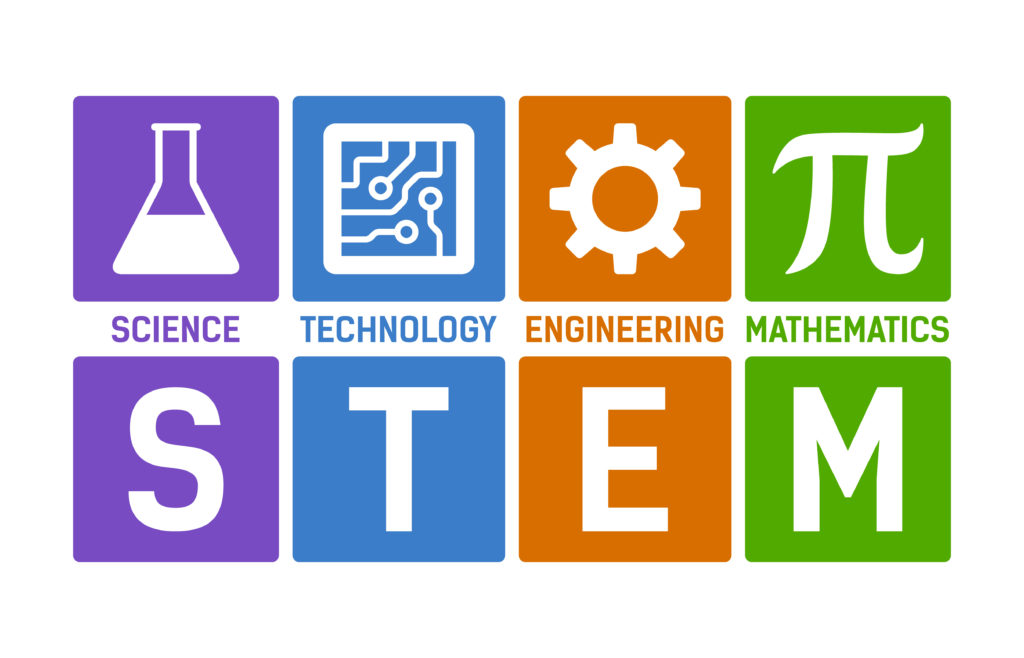
Focus on STEM education has drastically increased in the past twenty years. Science, Technology, Engineering, and Math (STEM) education, emphasizes the skills students need to excel in these areas. Based on the consistent evolution of technology, it is no surprise that education is focusing more on these skills.
In fact, as mentioned in an article written by the Marick Group, by 2018 there was an estimated need for 8.65 million workers in STEM-related jobs. With this much demand for experience in STEM skills, it’s important to find ways to connect students with these skills.
In the same article by the Marick Group it states that 57% of high school students lose interest in STEM-related fields before graduation. Even further, another article states that 52% of educated U.S. adults believe students do not pursue STEM careers because they think the concepts are too difficult. These statistics are alarming in a world of evolving technology.
This is exactly why educators need to advance their approach to teaching these skills. Finding ways to improve student engagement with STEM skills will help prevent this shift in interest before students enter the workplace. In a previous blog post, we discuss the importance of content in student engagement and how to improve it. The concepts mentioned in the post are also applicable in improving student engagement to STEM-skills. But there is more to consider for these important skills.
How can content help to support student engagement in STEM education? Here are two ways education developers can integrate content into STEM education and improve student engagement.
Expose Students to STEM Content Sooner
There is a strong push for focus on STEM education in high school and college curriculums, but this may be too late to increase engagement. In a commentary by Bill Nye for CNBC, Nye emphasizes that children need to be exposed to STEM-skills far before high school. Nye goes on to explain that exposing students sooner will help foster their interest. The best place to do this is in Pre-K lessons.
In a report by the National Conference of State Legislatures it is noted that students as young as two-years-old use STEM skills daily. However, other developmental skills, like literacy, are often focused on instead of STEM skills. Young children are more capable of absorbing these logical concepts, but they rarely get the exposure they need.
Providing Pre-K students with STEM content will not only give them the foundation they need, but it will also improve their literacy development. Including STEM content that is accessible to young students will help with verbal as well as technology literacy.
For these reasons, finding quality STEM content that is appropriate for this age group will help educators meet these needs.
Provide STEM Education Content Options
As we discussed in many of our previous blog posts, students engage most with content they find relatable. The best way to make content relatable is to provide students with vast content options. These two facts are just as important in STEM education as any other subject. Variety is the key to engagement.
ACT reports that in the past 5 years, only 48%-49% of students have expressed interest in STEM subjects. Equally significant is the fact that in the same timeframe, only 21% of high school students have met the STEM benchmark. This is clearly a reason for concern when the job market is desperate for experts in these areas.
If content variety can engage students, and students are currently not engaged in STEM skills, it only makes sense to increase variety in STEM content to engage older students.
STEM content can include anything that exposes students to an advancement that improves our way of life. Content options can include information that is deeply technical, but also content that provides detailed information on how to create something. The important part to note is that creation and implementation content is easily found through proper curation.
Furthermore, STEM content should also include real-world ideas. In an article written by Anne Jolly for EdWeek, Jolly shares how she helped her students engage with STEM skills. She asked her students to think of issues that could relate to them. Similarly, finding content that accurately portrays student concerns will help them connect with the skills.
Let’s Focus STEM Education Content
As jobs become more and more in demand between now and 2024, STEM education will only grow. Integrating STEM content early, and with large variety, will help increase student interest in these subject areas. As education developers, including content that is age appropriate and vast will help educators meet educational needs.
What are some ways you or your education products have helped educators increase student interest in STEM skills? Tell us in the comments below.

The craze for STEM Learning has now significantly increased in young students. The universities are coming up with various STEM Learning Programs in collaboration with other institutions & researchers.
Building a strong STEM Foundation through a balanced educational plan is the most ideal approach to guarantee that understudies are presented to math, science, and innovation all through their instructive profession. “If we want a society and culture that work for everyone, we need innovation in our relationships along with innovation in the STEM fields and STEM education”. The craze for STEM Learning has now significantly increased in young students. The universities are coming up with various STEM Learning Programs in collaboration with other institutions & researchers.